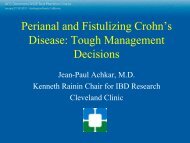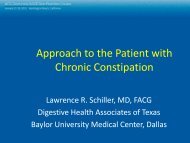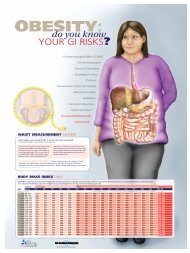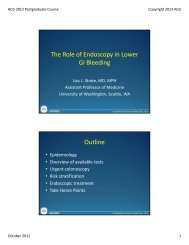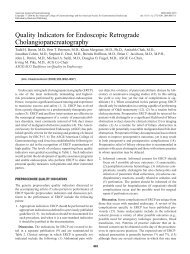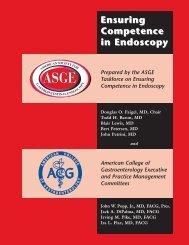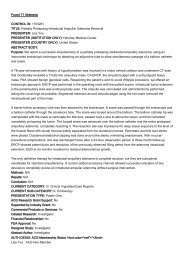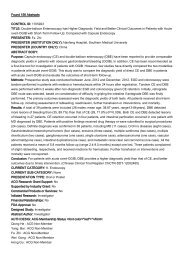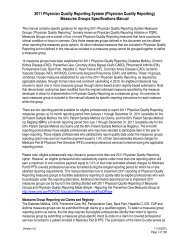Pregnancy
Pregnancy
Pregnancy
Create successful ePaper yourself
Turn your PDF publications into a flip-book with our unique Google optimized e-Paper software.
Liver Diseases in <strong>Pregnancy</strong><br />
................................................................................................................................................................<br />
Wilson Disease:<br />
Wilson disease is an inherited recessive disorder of<br />
copper transport in the golgi apparatus of the hepatocyte.<br />
It leads to the accumulation of copper in the liver,<br />
brain and other organs. It is a disease of the young thus<br />
affecting women of childbearing age. In the absence<br />
of treatment, cirrhosis of the liver, fulminant hepatic<br />
failure and advanced psychiatric and neurologic damage<br />
may occur. While fertility is decreased in patients<br />
with Wilson disease, women have become pregnant<br />
when appropriately diagnosed and treated. Treatment<br />
should be initiated as soon as diagnosis is made during<br />
pregnancy and regardless of the stage of pregnancy.<br />
Treatment should be maintained throughout pregnancy<br />
because its interruption could result in fulminant<br />
liver failure. Dose reduction in the order of 25-50%<br />
of pre-pregnancy maintenance therapy for both chelators<br />
D- penicillamine and trientene is required so that<br />
copper is not depleted from the body and wound healing<br />
is not impaired if C-section is to be performed. 45<br />
In addition, Copper depletion may be associated with<br />
congenital malformations.<br />
While fertility is decreased<br />
in patients with Wilson<br />
disease, women have become<br />
pregnant when appropriately<br />
diagnosed and treated.<br />
Trientene is FDA category C and its dose should be<br />
decreased to less than 500mg /day in pregnancy.<br />
Zinc sulfate (FDA Category C) is probably safe during<br />
pregnancy and breastfeeding. It is usually given at<br />
a dose of 50 mg orally three times daily and does not<br />
require dose adjustment. 49<br />
Primary Biliary Cirrhosis and Primary Sclerosing<br />
Cholangitis:<br />
A few cases of pregnancy have been described in<br />
women with primary biliary cirrhosis (PBC). This is<br />
partly due to the later age at presentation of the disease.<br />
Although reports suggest an increased risk for premature<br />
delivery, still births and liver failure, there are<br />
no good data on the outcome of pregnancy in women<br />
with PBC. When pregnancy occurs, PBC may induce<br />
a new onset pruritus. Diagnosis and management are<br />
similar to the non pregnant state. Upper endoscopy is<br />
recommended 50 in order to screen for esophageal varices.<br />
Nonselective beta blockers and banding ligation<br />
should be given if necessary. Ursodeoxycholic acid or<br />
UDCA (FDA category B) is the treatment of choice<br />
due to its safety as discussed earlier.<br />
Primary sclerosing cholangitis is rarely described in<br />
pregnancy. Abdominal pain and pruritus seem to be<br />
the major symptoms in pregnancy. Diagnosis and<br />
therapy are similar to the non pregnant state.<br />
Budd-Chiari Syndrome:<br />
D-penicillamine is FDA Category D. It has been associated<br />
with teratogenic abnormalities in 5% of infants<br />
(cutis laxa, micrognathia, low-set ears, inguinal<br />
hernias, and joint mobility). 46 The suggested dose in<br />
pregnancy is



